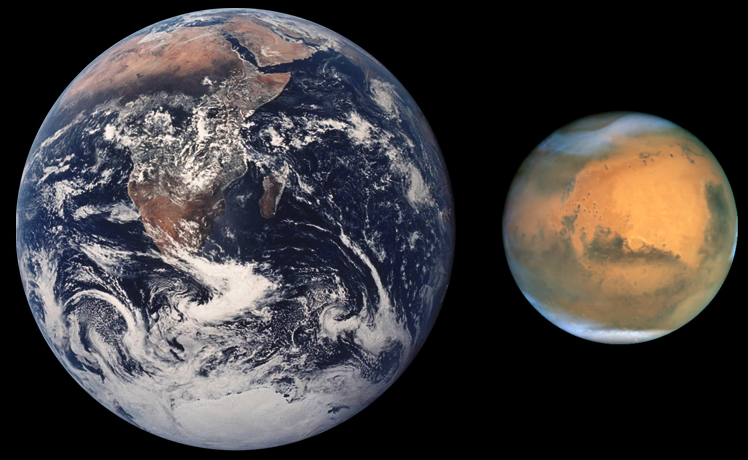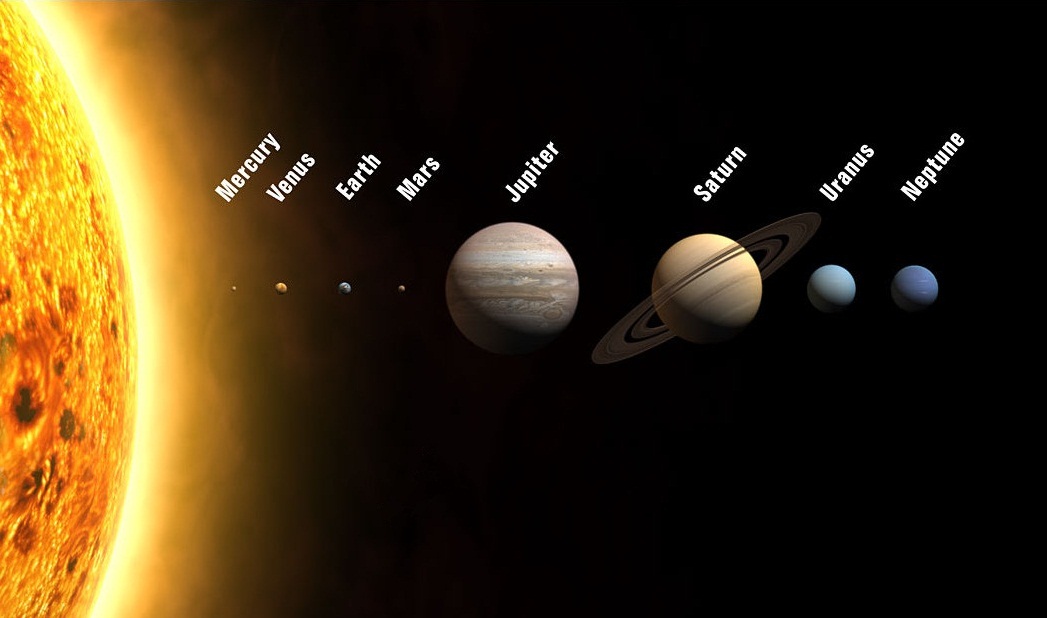Our Universe
Monday, March 18, 2013
Thursday, March 14, 2013
Biggest stars currently known to man
So, you thought our Sun was big?
Think again!
Here's a list of the 10 biggest stars currently known to man, there could be even bigger stars which we have not found yet.
10. Mu Cephei, about 6000 lightyears out, is 650x the Sun.
9. VV Cephei A, about 5000 lightyears away from us, is at least 1050x bigger than the Sun.
8. PZ Cassiopeiae, at the enormous distance of 17800 lightyears, 1190x the Sun.
7. RW Cephei, 11500 lightyears, 1260x the Sun.
6. VY Canis Majoris, (3900 ly) once number 1, but smaller than expected, is still about 1420x the Sun.
5. KY Cygni, 5000 ly, at least 1420x the Sun.
4. KW Sagittarii, 10000 ly away, is about 1460x the Sun.
3. VX Sagittarii, more than 5000 lightyears away, is 1520x the Sun.
2. WOH G64, at 163000(!) lightyears away is 1540 times bigger than our Sun.
And finally our number 1 on the list...
NML Cygni!
NML Cygni is about 5300 lightyears away from Earth and is 1650 times the size of the Sun. To give you an impression of how large that actually is: If this was the star of the Solar System, its surface would reach between the orbits of Jupiter and Saturn. Saturn is more than 1,4 billion kilometers away from the Sun...
Think again!
Here's a list of the 10 biggest stars currently known to man, there could be even bigger stars which we have not found yet.
10. Mu Cephei, about 6000 lightyears out, is 650x the Sun.
9. VV Cephei A, about 5000 lightyears away from us, is at least 1050x bigger than the Sun.
8. PZ Cassiopeiae, at the enormous distance of 17800 lightyears, 1190x the Sun.
7. RW Cephei, 11500 lightyears, 1260x the Sun.
6. VY Canis Majoris, (3900 ly) once number 1, but smaller than expected, is still about 1420x the Sun.
5. KY Cygni, 5000 ly, at least 1420x the Sun.
4. KW Sagittarii, 10000 ly away, is about 1460x the Sun.
3. VX Sagittarii, more than 5000 lightyears away, is 1520x the Sun.
 |
| This is how VX Sagittarii might look from 2400 AU (Sun-to-Earth) away. It looks "bubbly" because it is a pulsating star (much like a heart is pulsating). |
2. WOH G64, at 163000(!) lightyears away is 1540 times bigger than our Sun.
 |
| Artist's rendition of WOH G64 |
NML Cygni!
NML Cygni is about 5300 lightyears away from Earth and is 1650 times the size of the Sun. To give you an impression of how large that actually is: If this was the star of the Solar System, its surface would reach between the orbits of Jupiter and Saturn. Saturn is more than 1,4 billion kilometers away from the Sun...
Wednesday, March 13, 2013
Moon
The Moon is the only natural satellite of Earth. It is in synchronized rotation with our planet, meaning that it always faces Earth with the same side, no matter from where it is viewed.
Seen from Earth, it is the brightest object in the sky, right after the Sun. When viewed from the ground, the Moon, coincidentally, is about the same size as the Sun, allowing for total Solar eclipses.
The Moon moves away from Earth, about 3,8 cm per year. In 500 million years, a total Solar eclipse will therefore no longer be possible.
The formation of the Moon is believed to be caused by a collision of Earth with a Mars-sized planet, known as Theia. This happened not long after the Earth itself was formed, thus not effecting life on the planet.
Effects on the Earth are tidal, meaning that it pulls Earth's oceans towards it, creating high tide and low tide. Another effect the moon has on Earth is that it slows the rotation, by about 2 milliseconds per century.
Seen from Earth, it is the brightest object in the sky, right after the Sun. When viewed from the ground, the Moon, coincidentally, is about the same size as the Sun, allowing for total Solar eclipses.
The Moon moves away from Earth, about 3,8 cm per year. In 500 million years, a total Solar eclipse will therefore no longer be possible.
The formation of the Moon is believed to be caused by a collision of Earth with a Mars-sized planet, known as Theia. This happened not long after the Earth itself was formed, thus not effecting life on the planet.
Effects on the Earth are tidal, meaning that it pulls Earth's oceans towards it, creating high tide and low tide. Another effect the moon has on Earth is that it slows the rotation, by about 2 milliseconds per century.
Voyager 1, more than 35 years of service
Voyager 1's travel is amazing. It is the furthest man-made object and was launched on September 5, 1977. In November 2012, it reached an astonishing distance of 123 AU, with 1 AU being the distance from Sun to Earth (roughly 150 million kilometers). Voyager 1 is on the brink of reaching interstellar space, thus leaving the Solar System.
The initial goal of the Voyager 1 was a flyby of Jupiter and Saturn, to learn more about those planets. Those goals were completed in 1979 and 1980.
Voyager one has a speed of 17,26 km/s, which is also a record for a man-made object.
Voyager 1 has taken some amazing photos over time:
The initial goal of the Voyager 1 was a flyby of Jupiter and Saturn, to learn more about those planets. Those goals were completed in 1979 and 1980.
Voyager one has a speed of 17,26 km/s, which is also a record for a man-made object.
Voyager 1 has taken some amazing photos over time:
 | |
| The Great Red Spot on Jupiter |
 | |
| Saturn, from 5,3 million kilometers |
 | |
| Earth (the white pixel in the right "beam") as seen from 6 billion km away, known as "Pale Blue Dot" |
Mars
Mars is the 4th planet in the Solar System. It is about half the size of Earth. Mars has always fascinated people, being the closest planet to Earth. Humans have always searched for proof of life on the "Red Planet".
Recently, NASA's vehicle Curiosity on Mars, has discovered core elements that are necessary for life. This shows that there could have been life on Mars a long time ago.
One of the most interesting things about Mars is Olympus Mons (Mount Olympus). This is the highest planetary volcano/mountain in the Solar System, with a height of almost 26 kilometers.
A year on Mars lasts 1,8809 Earth years, or roughly 1 year and 320 days.
Mars has 2 moons, Phobos and Deimos. It is expected that -due to gravitational pull- Phobos will collide with Mars or disintegrate into a ring around Mars in about 50 million years.
 |
| Mars (right) compared to Earth |
One of the most interesting things about Mars is Olympus Mons (Mount Olympus). This is the highest planetary volcano/mountain in the Solar System, with a height of almost 26 kilometers.
| Olympus Mons compared to Mt. Everest |
Mars has 2 moons, Phobos and Deimos. It is expected that -due to gravitational pull- Phobos will collide with Mars or disintegrate into a ring around Mars in about 50 million years.
The Solar System
The Solar System consists of a star known as the Sun and its planetary system with eight planets and a lot of other objects.
The Solar System is located in the Milky Way. The closest star is Proxima Centauri, which is about 4,22 lightyears away.
 | |
| Size to scale, distance not to scale. |
Earth
Planet Earth is -as we all know- our home planet. It is the third planet as seen from the Sun, the star of the Solar System. Earth has one natural satellite which is called the Moon. It is a solid planet and the most dense (in mass) of the Solar System.
The planet formed about 4,5 billion years ago. Theories about how Earth began to form differ a lot. Most astrophysicists believe that the planet is a result of accretion
The closest planet to Earth is Mars.
 |
| Earth and Moon |
The planet formed about 4,5 billion years ago. Theories about how Earth began to form differ a lot. Most astrophysicists believe that the planet is a result of accretion
The closest planet to Earth is Mars.
Subscribe to:
Posts (Atom)
